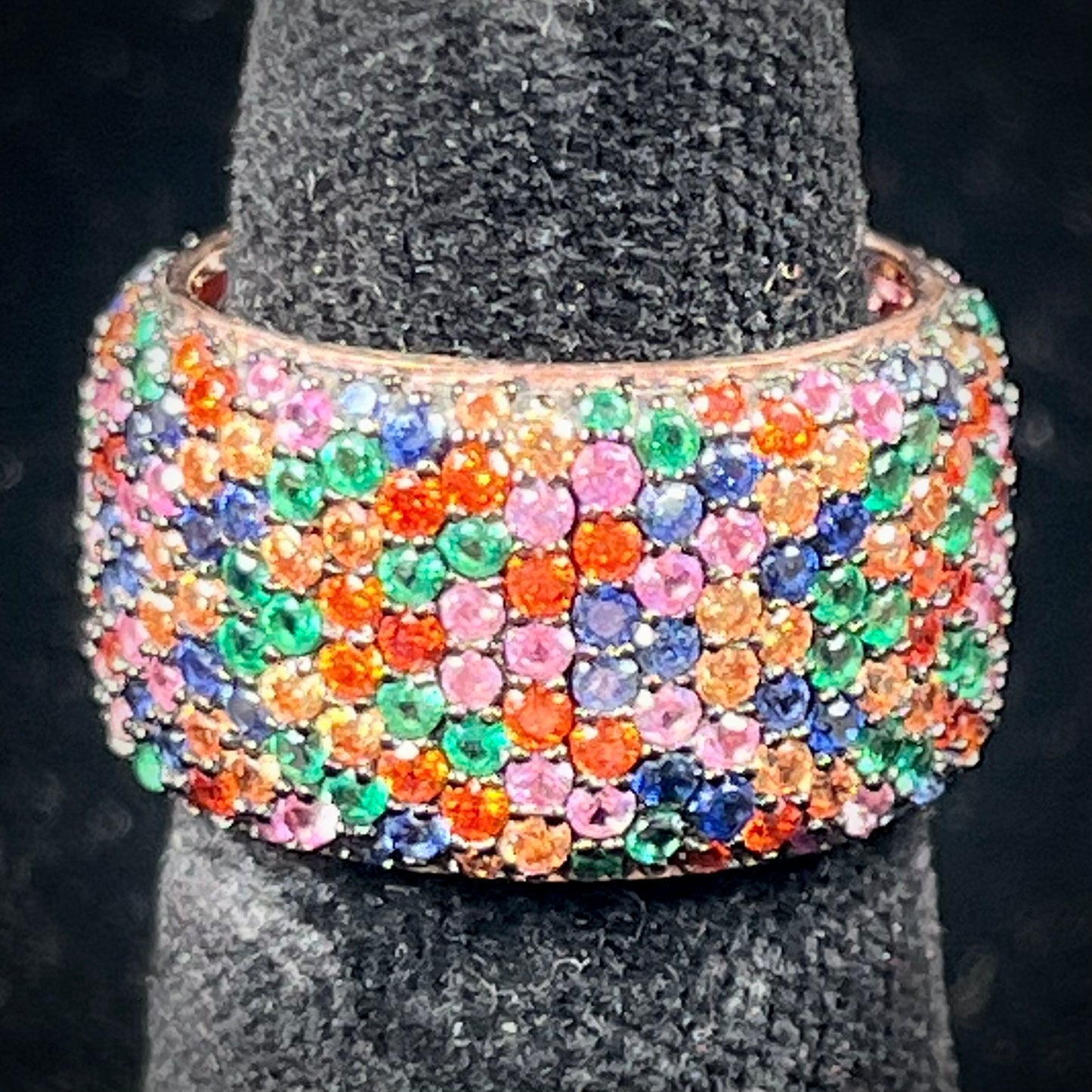Burton's Gems and Opals
Multicolor Gemstone Eternity Band | Sterling Silver
Multicolor Gemstone Eternity Band | Sterling Silver
Couldn't load pickup availability
A Bit About The Piece:
Multicolor Multi-Gemstone Ring set in Rose Gold over Silver
Details, details...
The Gemstones: Tourmaline, Sapphire, and Garnet
- stone cut: faceted rounds
- average stone diameter: 1.45mm
The Setting: Prong Set Sterling Silver Setting
- .925 sterling silver, rose gold plated
- ring size: 6.00
About Tourmaline:
Tourmaline is a gemstone well-known for naturally occurring in any shade and saturation of color on the color spectrum. Special terms are assigned to stones of certain colors, such as "rubellite" (red), "indicolite" (blue), "schorl" (black), "dravite" (brown), and "Paraiba" (highly rare electric blue only from Brazil). Occasionally, multiple vivid colors can be present in a single stone, completely independent from one another. These stones are referred to as "bicolor" and "tricolor."
Tourmaline is a hard stone coming in at 7 to 7.5 on the Mohs hardness scale. While stones are safe to use with chemical jewelry cleaner, it is very important to note that tourmaline cannot be put into an ultrasonic cleaner machine. Many tourmalines contain natural liquid-filled inclusions that can burst from ultrasonic vibrations created by such a machine, causing a stone to break. Soap, water, and a soft bristled toothbrush are safe and effective for cleaning tourmaline jewelry.
About Sapphire:
While many know sapphire to be blue, the gemstone forms naturally in any shade and saturation of color on the color spectrum. Like ruby, sapphire is a member of the "corundum" family. This means that all rubies are a particular shade of red sapphire. Another notable variety of corundum is "padparadscha sapphire," a sunset, salmon pink sapphire from Sri Lanka, Madagascar, and Tanzania. Other popular colors in the trade include yellow, pink, and white sapphire. Color changing varieties do exist, as well as stones that display "asterism," a term for when reflected light creates a star effect in the stone. Most sapphire available on the market is heat treated. This is an accepted practice in the industry, and it is best to assume ALL sapphire has been heat treated unless otherwise proven by a trusted independent laboratory report. Sapphire is the official birthstone for the month of September.
Sapphire is an incredibly durable stone that is excellent for everyday wear. The stone ranks 9 on the Mohs hardness scale and is highly scratch resistant as a result; it also is resistant to chipping or breaking due to being tough as well. Sapphire jewelry, natural or manmade, is safe to clean in chemical jewelry cleaners, ultrasonic cleaners, and steam cleaners.
About Garnet:
While it might be common belief that all garnet is red, this is nothing more than a misconception. A wide variety of garnet species exist with stones coming in every color, including stones that visibly change color under different lighting conditions. Some species, like the traditional brownish-red "almandine" (which used to be referred to as "almandite), are more common. Others, like the brilliant green "tsavorite" and "demantoid" varieties, are far more rare, commanding higher prices in the trade.
Because the term "garnet" does not refer to one single species of stone, care instructions vary. Green demantoid garnet requires the most care, sitting at 6.5 on the Mohs scale of hardness. Red almandite and pyrope, orange spessartite, and green tsavorite are known to be harder varieties, ranking a durable 7.5 on the hardness scale. While other varieties fall somewhere in between, most are durable enough to wear without any special care or mind. Garnet jewelry can safely be cleaned in chemical jewelry cleaner unless otherwise noted on the label.
Wanna closer look?
Share


















